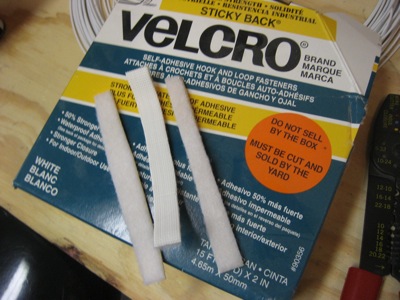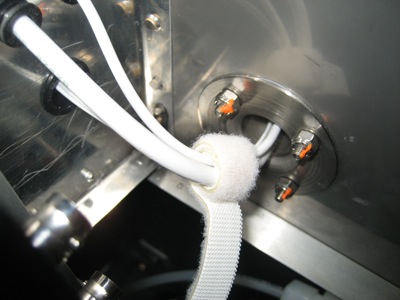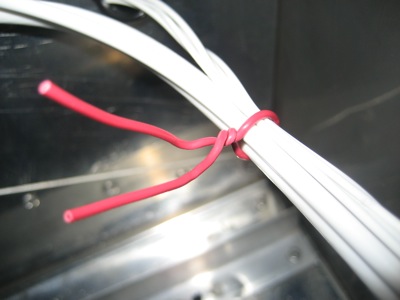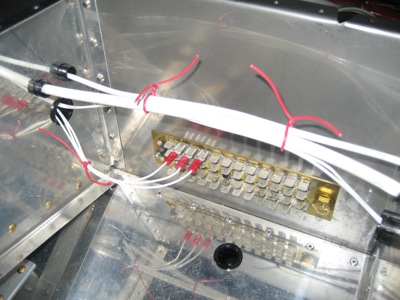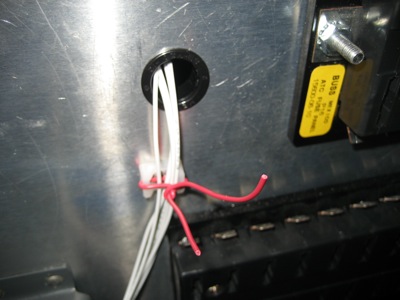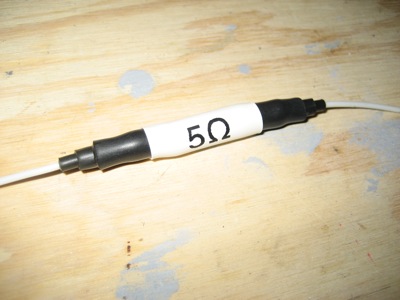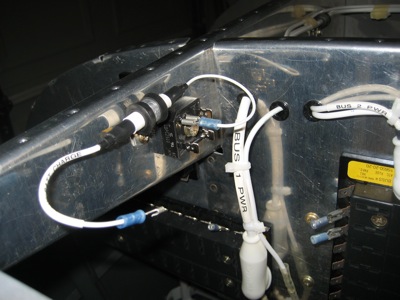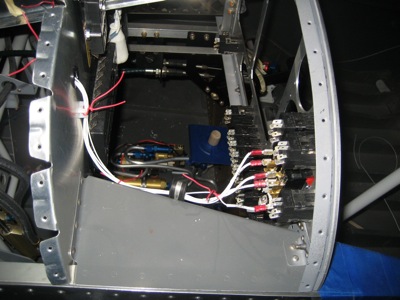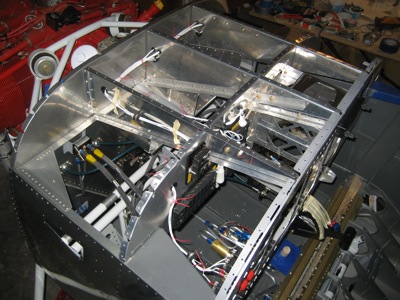I made a cable to connect my bench power supply to the airplane, where the battery would normally be hooked up. This will let me test the wiring as I go. I also bought the totally sweet mechanic's creeper that's visible in the background. I've always wanted a flimsy excuse to buy one of those.
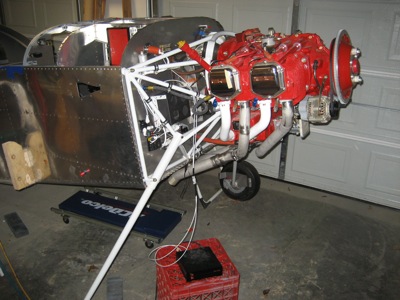
Mary, ever a good sport, agreed to crawl into the fuselage to help me rivet some tie wrap anchors in place.
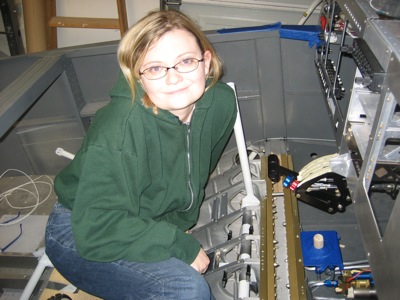
…while I was on the creeper below, pulling rivets:
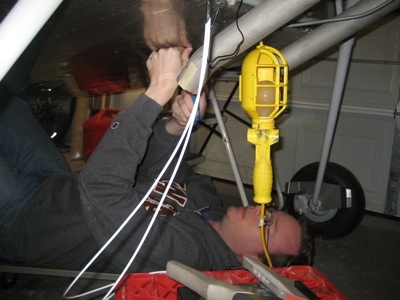
We put in two rows of plastic tie wrap anchors between the firewall and spar. They are attached to the floor with blind rivets that are flush on the exterior skin. Here you can see I've started to run a few wires back to the cargo bay area.
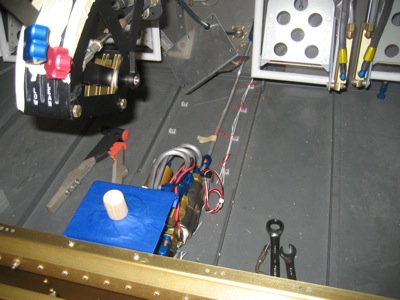
More tie wrap anchors are riveted to the sides of the center tunnel between the forward and aft spars. These will be used to keep the wire bundles away from the elevator pushrod. Some of these were kind of tricky to rivet in, but I'm glad I went to the extra effort instead of cheating by using the self-adhesive kind. I just don't trust them to not eventually come unglued.
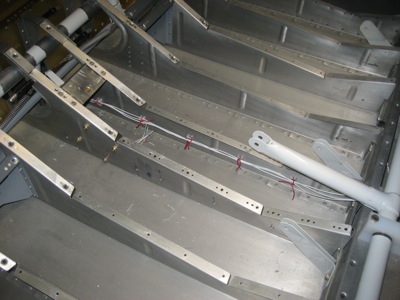
So far, most of the wires I've run through the center tunnel go to the aux battery.
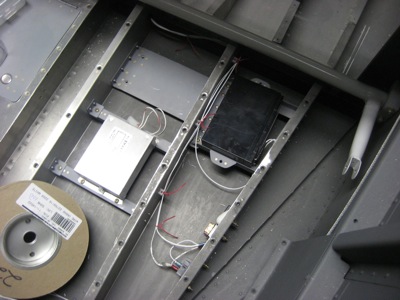
I'm still playing with the exact configuration of the aux battery charging circuit.
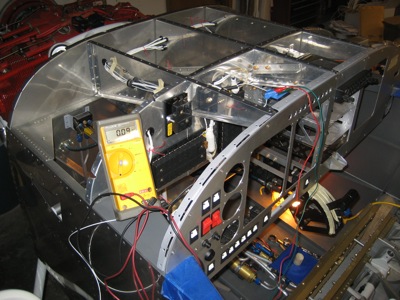
Planning the routing of wire bundles and then actually running the wires is a delicate, fiddly, and complicated business – so of course I love it. But I'll admit that it doesn't make for very exciting photographs. I will try to post interesting things here, but don't expect a picture of every wire! Once I get farther along I'll post an updated schematic of the airplane, for those who are really into this kind of thing.
